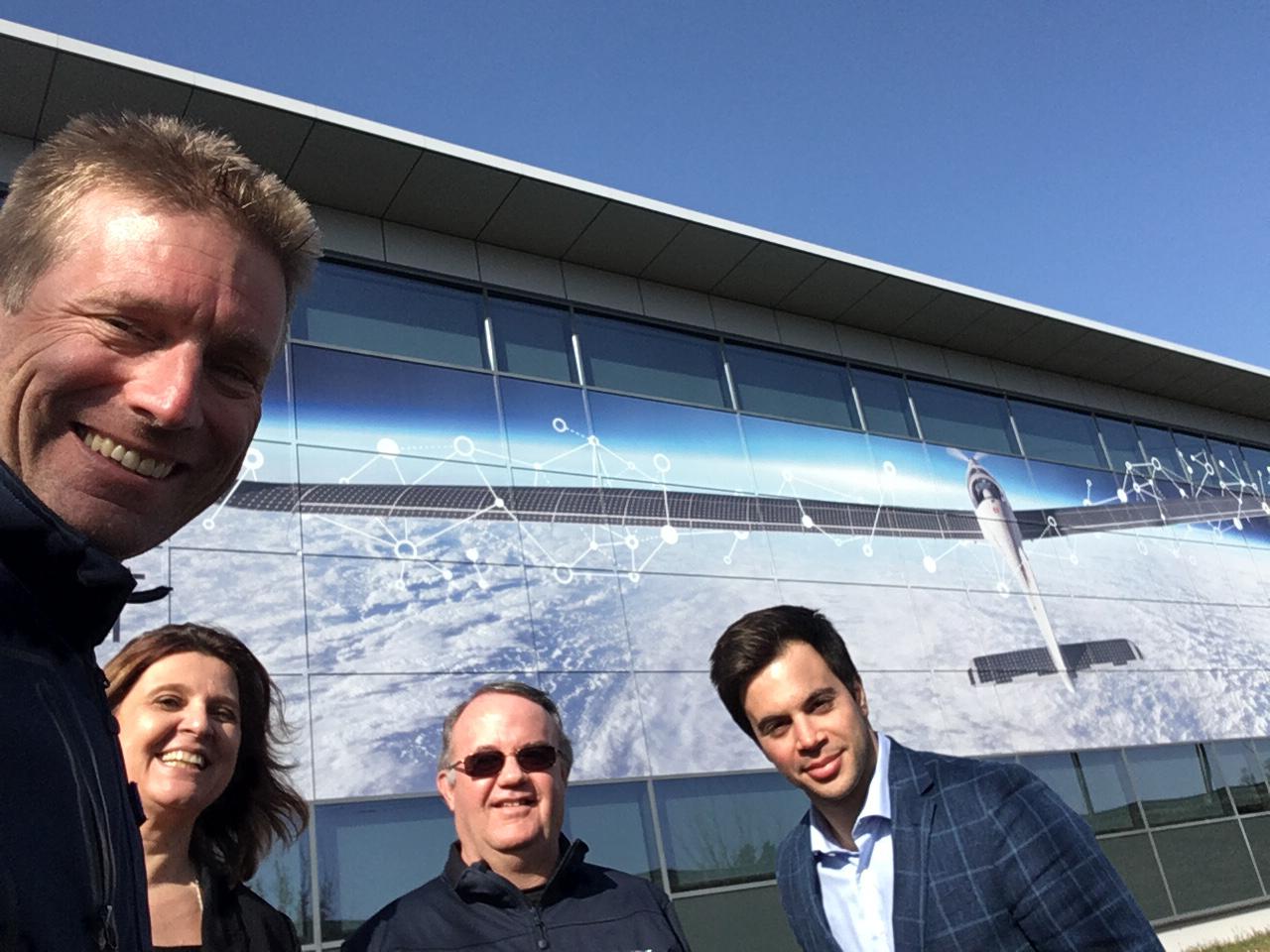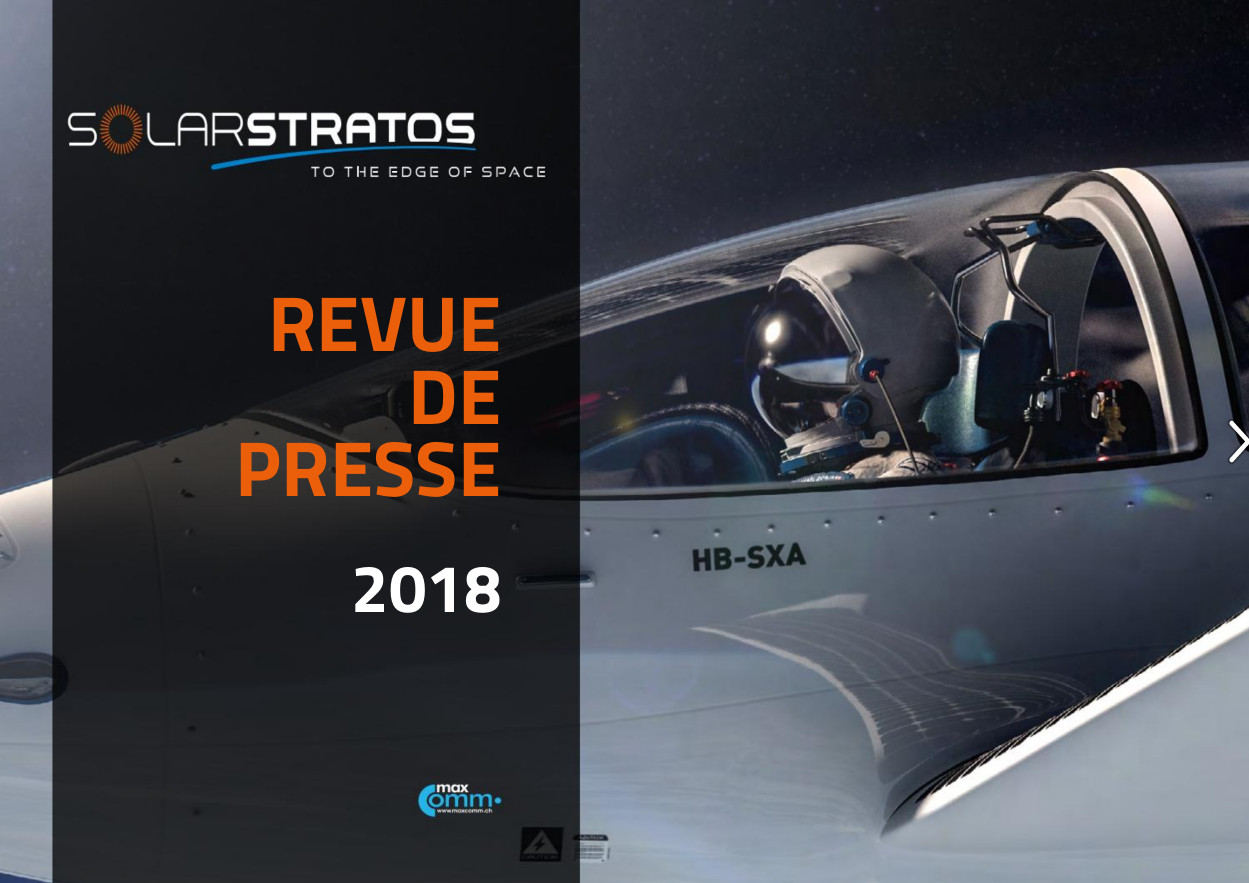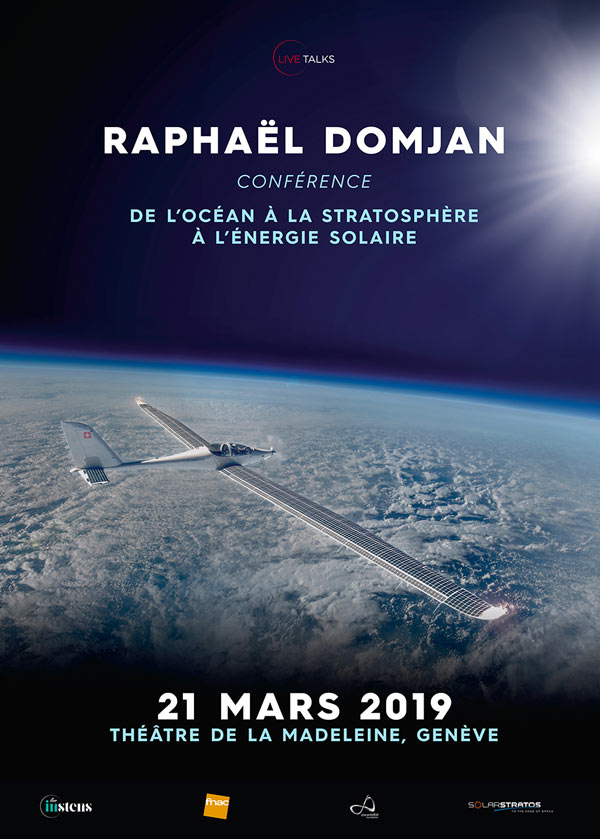Celabrating SolarStratos
Our partners are deeply involved in the development of our project and Fischer Connectors has recently given us a very visual example of the excellent support we receive, decorating their St Prex façade in SolarStratos colours. So now, if you take the train from Geneva to Lausanne, keep an eye open for the new look!
Meanwhile in Payerne, the optimisation work continues apace, and the team is eager to roll the plane out of the hangar and to see it flying again. Stay posted for an update soon.
A toasty spacesuit
Our partner, Zvezda, has further developed the Sokol 2 spacesuit that Raphael Domjan will wear to fly the plane to include an integrated heating system. They have also insulated the head and hands, reinforced the connectors, developed a basic cockpit simulator and integrated a “Life Support” system that will assist the pilot during the stratospheric flight.
At the end of January in Moscow, Zvezda presented the developments to the SolarStratos team, including our expert astronaut, Jean-Francois Clervoy. Unfortunately, Raphael had the flu and couldn’t complete the tests during this visit. These will be rescheduled for the very near future.
What defines the stratosphere ?
Raphael Domjan and SolarStratos are on a mission to conquer the stratosphere, but do we know what really defines it? Borders in space are not formally defined. NASA, for example, has historically called the moment when a returning spaceship is at 400,000 feet or 130km. Otherwise, to be called an astronaut, you have to have flown at an altitude of over 100kms. As a point of reference, the International Space Station is situated at an average altitude of 400km.
The stratosphere extends on average from 12-15km up to about 50km of altitude. Today, the tendency is to refer to ‘near space’ to define the area from 16-18 km to 100 km, this is the area between where aircraft fly (flight level 600-60,000 feet or approx. 20 km, above which there is no longer air control) and 100 km (the lowest limit for satellites to orbit). Currently only space rockets and balloons navigate this area, there is very little activity.
This is our destination. Our mission is to fly in this space using solar power as there is not enough oxygen to power aircraft engines operating on hydrocarbons. From 16,000 m, Raphael will be flying in the stratosphere with more than 95% of the atmosphere beneath him.
Press review and statistics
SolarStratos enjoyed significant media coverage in 2018 with several news and behind the scenes feature stories. Raphael Domjan and the SolarStratos team were also very active across the project’s social media channels. Click on the link for the 2018 media highlights.
Raphael’s public lecture in Geneva
On 21 March, Raphael Domjan will give a public lecture titled ‘From the ocean to the stratosphere powered by solar energy’ at the Madeleine theatre in Geneva. Our eco-explorer will present the story of PlanetSolar, the first ever boat to go around the world powered by solar energy. He will also present the SolarStratos mission that combines a dream, innovation and energy efficiency and demonstrate the potential of renewable energy. For more information and to attend, please click here.






